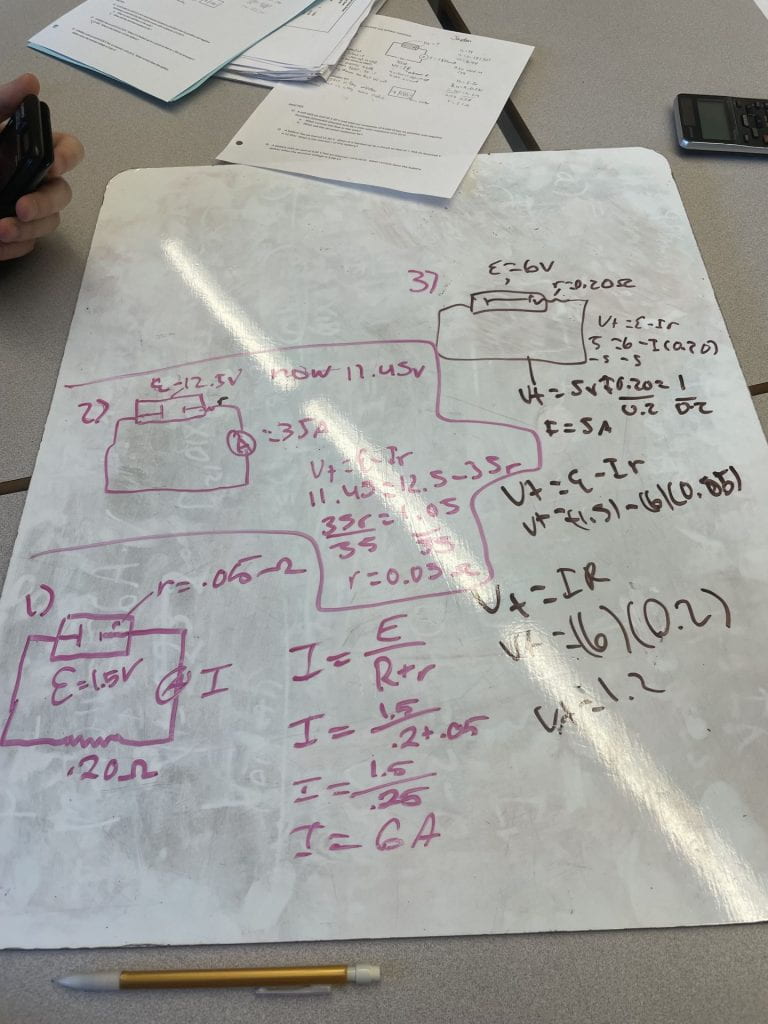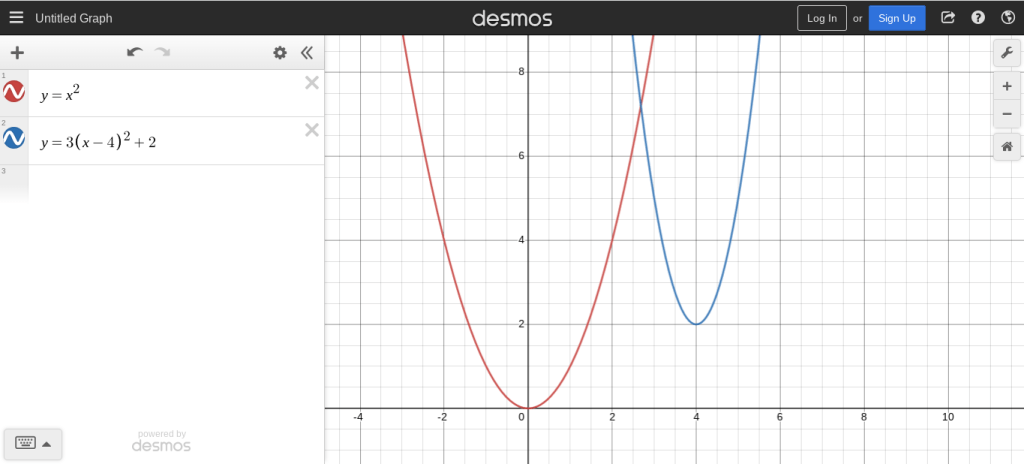The red line is the standard form and equation for a parabola.
The blue line is my parabola and equation.
How does each letter in the equation affect the parabola?
In the equation y=a(x-h)2 each letter has its own role
What does A do?
A in this equation tells us what way the parabola will open. It will either open upwards or downwards. When the value of A is less than zero (a < 0) the graph of the parabola will open downwards. When the A value is greater than 1 (a > 1) it will open Upwards, and it will be narrow. If A is greater than 0 but less than 1 (0<A<1) it will be wider.
In my equation y=3(x-4)2+2, the A value is 3. 3 is greater than 0 so my parabola will open upwards and will be narrower.
What does H do?
The H in this equation determines how far left or right the vertex (the point where the parabola begins to open) of my parabola will move from 0,0 on the graph.
Be careful though, if the H has – in front of it the vertex will move to the right because the number would be positive. If the H value is a negative, that – will turn into a + and the vertex will shift to the left.
In my parabola equation the H value is 4 so my vertex will shift 4 to the right from 0,0.
What does K do?
The K in the equation determines how far up or down the vertex moves.
If the value of K is a positive number, the vertex will move up. If the K value is a negative the vertex will move down.
The K value in my equation is 2 so the vertex will move 2 up from 0,0 on the graph.
Finding the vertex and putting everything together...
The h and K values will tell you exactly where on your graph the vertex of your parabola is. They are points on the graph. The H is the X value, and the K is the Y value. The vertex of my graph is 4,2. If we look at the A value too, we can tell that my graph will be narrower, and it will open upwards.
My equation is different from the standard one because the vertex has moved over 4 and up 2, and it is narrower than the standard parabola equation.
Self Assesment
I represented a mathematical equation by having a screen shot of a graph, having formulas for a standard parabola and my parabola and by explaining in my own words what each component of the equations meant.
I used mathematical vocabulary through out this assignment. I mostly used it when I was explaining what each part of the equation did.
I used coloured headings and I had made some words bold to clearly identify what I was talking about and important key words that should be noted.








